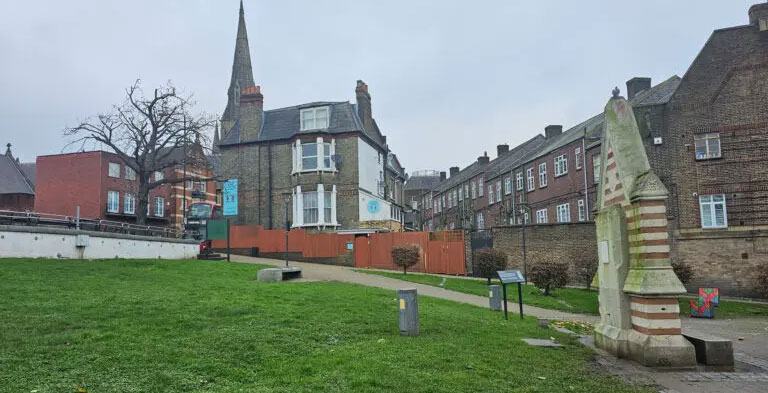
Mistletoe is quite rare in Lambeth, so as part of the Lambeth Biodiversity Action Plan, we’re working to encourage it to spread onto new host trees, as well as protecting trees where it’s already found.
Wild and weird
Most of us think of mistletoe as just a green leaf to kiss under at Christmas – but mistletoe, (Latin or ‘scientific’ name Viscum album), is a wild plant with a truly weird lifestyle. It’s usually called a parasite, living on ‘host’ trees, exploiting them for food, water and shelter – without killing the host. But actually Mistletoe is green, meaning it makes some of its own food by photosynthesis. But it has no roots and takes water from its host – so it’s not a true parasite and the tree and the mistletoe can co-exist happily for many years.
Sticks and branches
During February and March we’re transplanting sticky mistletoe berries onto suitable host trees in many of Lambeth’s green spaces, using a mixture of berries from bushes in our own parks, as well as some donated by the Royal Parks Agency from sites where they grow in abundance. The seed sticks to a tree branch, the new seedling germinates and attaches to a new host tree. We’re only choosing healthy trees, and we will monitor and manage them so they don’t get over-burdened with mistletoe
Tree spotting
We’re really keen to work with residents and local community groups to help us transplant mistletoe onto suitable host trees. We’d like you to help us find out if there are any existing mistletoe plants on trees where you live, work or visit, so we can keep a record and help look after them.
Magic and medicine
Mistletoe is surrounded by myth and mystery, much of it going back to pagan, pre-Christian times, but there’s now increasing interest in its ecology and medical properties. Its sticky white berries are an important food source for wild birds, including Mistle and Song Thrushes. It also contains chemicals that might have a future role in cancer treatment or help boost the human immune system.
For more information
- For more about the Lambeth Biodiversity Action Plan, or
- to register your interest in the mistletoe transplantation project, or
- to report where you’ve seen mistletoe in Lambeth, please contact Dr Iain Boulton at Lambeth Landscapes on 020 7926 6209 or at iboulton@lambeth.gov.uk.
- For more about both the science and the folklore of mistletoe go online.



